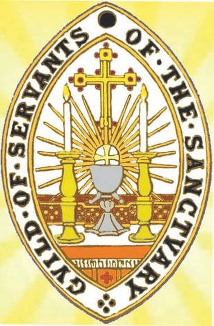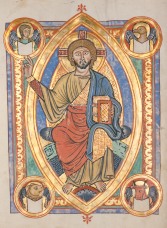Although no longer an active server at church, Rod has maintained his membership of the Guild of Servants of the Sanctuary, whose medallion and emblem is shown.
The outline of the design is similar to a rugby football with pointed ends and is an important symbol in Christian architecture and art.
The shape is formed from two insersecting circles with the same radius, such that the centre point of each lies on the circumference of the other. It is an ancient geometrical construction known to Pythagoras and in Euclid’s Elements (Book 1). Both had examined its mathematical and mystical properties (including as a basis for a branch of maths called Sacred Geometry). One of its properties is that it is possible to use the upper segment to construct a perfect equilateral triangle by using ruler and compasses alone - without the use of measurement.
The form is called the ‘Vesica Piscis’ - the words are Latin for ‘Fish Bladder’. It is also known as a ‘Mandoria’ - the word for an almond. In a nearby RC church there is, above the altar, a magnificent stained glass window formed from the Vesica Piscis design. In Gothic architecture, the pointed arches are designed, using the dimensions and proportions of the upper half of a Vesica Piscis.
The cover page shows a Vesica Piscis in the form of a rudimentary fish, inside of which is the name of Jesus in Greek. Such formations are frequently to be found, in simplified form, on the rear of motor cars belonging to Christians. The history of this is derived from Roman times under the Empire, when Christians were brutally persecuted. It was essential for strangers to be able to recognise each other. The practice was for one person to describe an arc on the ground. The other would inscribe the opposite arc as an identifier and would be then able to trust the other.






